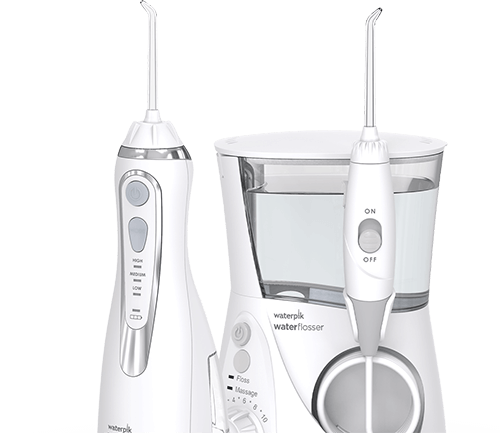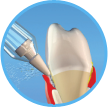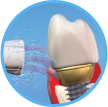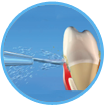Our Range of Water Flossers
Removes up to 99.9% of plaque from treated areas
Our Products
Water flossers: a guide
1. Why is flossing important?
Cleaning in-between our teeth is an important stage in the oral care process. Using floss or interdental brushes gets to the parts of the teeth that toothbrushes alone can't reach. This process is one of the most effective ways to remove plaque and reduce the risk of tartar forming.
Ultimately, adopting a regular flossing routine minimises the risk of more serious tooth and gum conditions developing.
It is recommended that you use interdental brushes in addition to regular tooth brushing from the age of 12. However, dental floss might be more appropriate if the spaces between your teeth aren't large enough for brushes.
2. What is a water flosser?
A water flosser – sometimes referred to as an oral irrigator – is a handheld flosser that directs a jet of water between your teeth and gums. Like standard dental floss, it removes food, plaque and any other bacteria from between your teeth.
There are different types of water flossers available, from electric flossers that plug into your mains to battery-powered models. Each of them is designed to keep teeth clean and clear of debris that can build up during the day.
3. Why use a water flosser?
While dental floss tape or interdental brushes can be effective in many cases, a water flosser offers an enhanced cleaning.
They can be especially useful if you wear braces or have had other types of orthodontal work done and you need to maneuverer around tricky to reach spots. Alternatively, you might have sensitive gums and find that choosing a water flosser for your teeth is a more comfortable alternative to standard floss.
Some people also find that flossing by hand is awkward and that opting for a water jet flosser is a more comfortable option.
4. When to use a water flosser
If you're new to using a water dental flosser, you might be wondering at what stage of your teeth cleaning routine to use it. Based on research from 2018 by the Oral Health Foundation, interdental cleaning or flossing should come before brushing.
You might decide to use interdental brushes or standard tape alongside your water flosser or to use your electric water jet flosser on its own. Begin your routine with this step before picking up your toothbrush and brushing with fluoride toothpaste.
By doing this in this order, you're more likely to find that you are left with a cleaner mouth, healthy gums and fresh breath.











